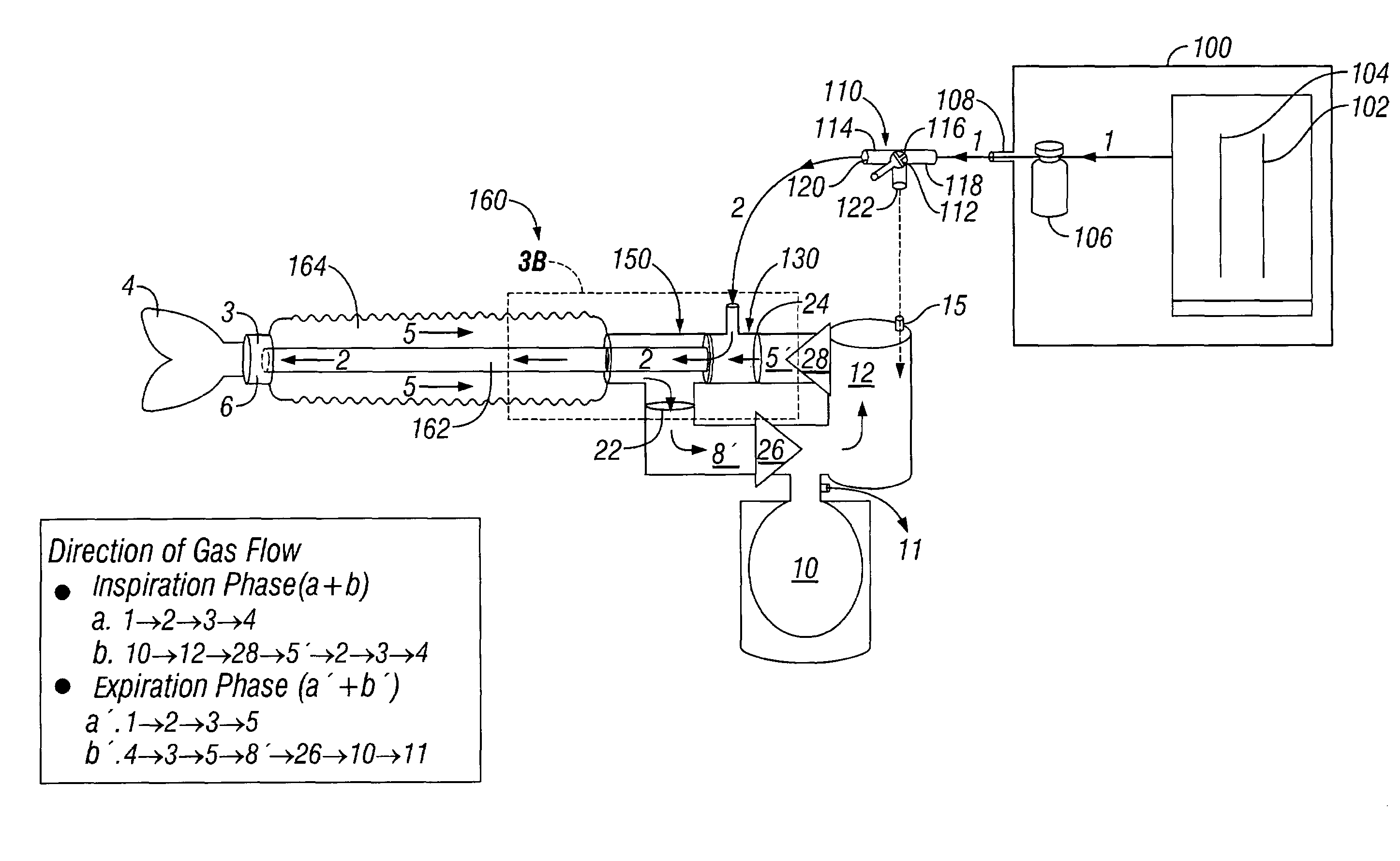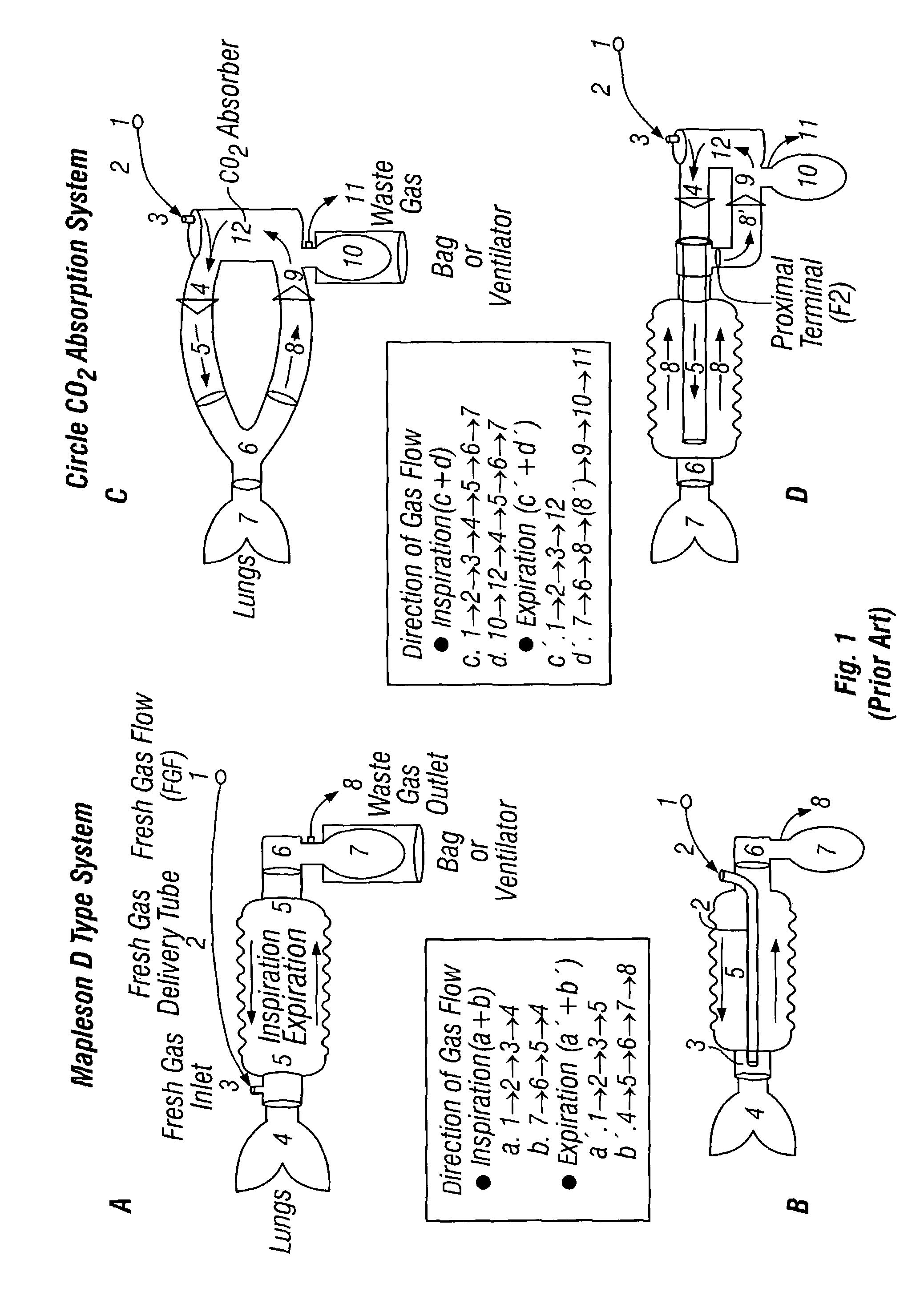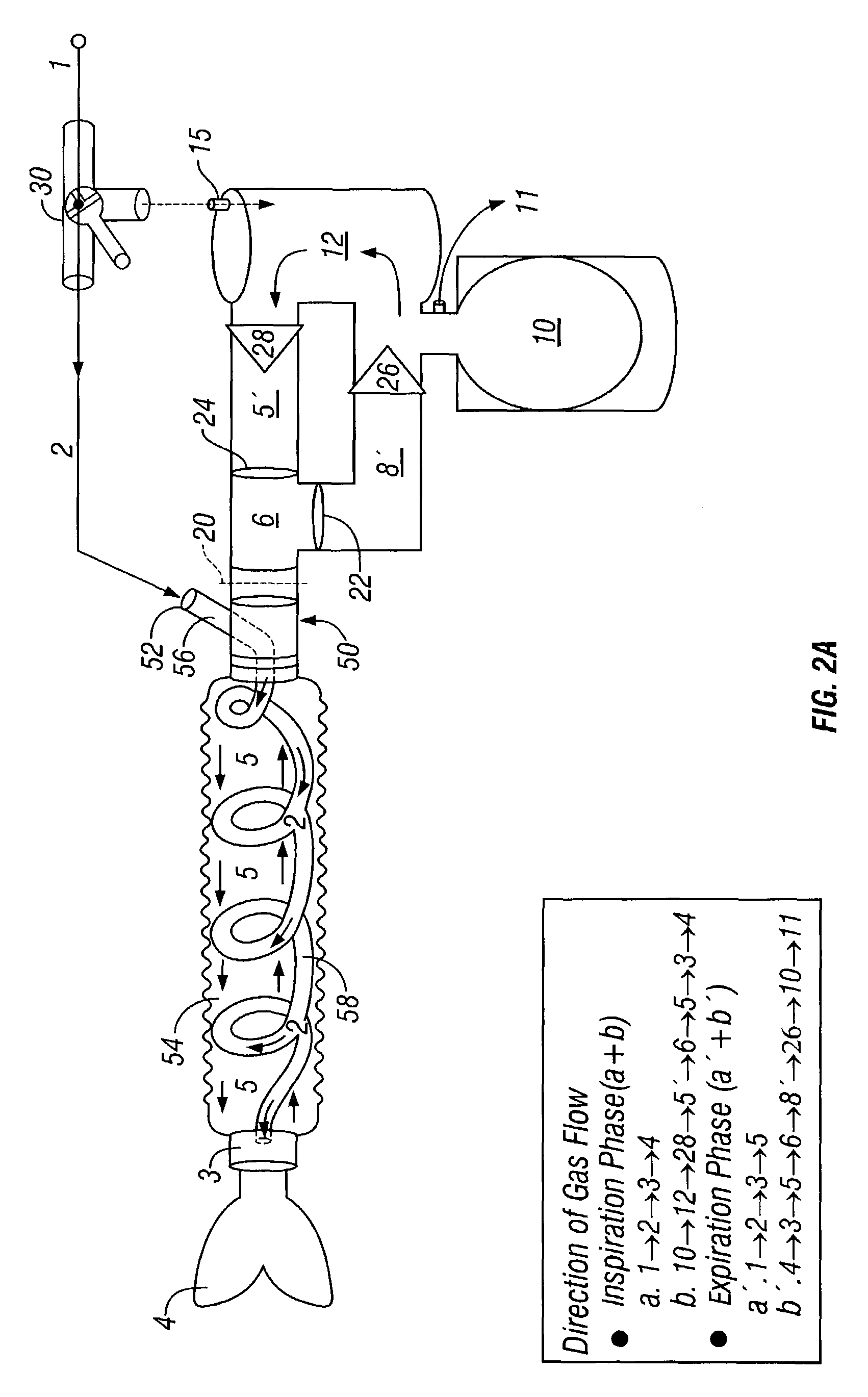Breathing systems with post-inspiratory valve fresh gas flow input, components for implementing same, and methods of use
a technology of fresh gas and ventilation system, applied in the direction of valve operating means/release devices, combustion types, lighting and heating apparatus, etc., can solve the problems of limiting the function of the assisted ventilation system, the low flow technique, even with the circle system, and the large effort required to modify the assisted ventilation system. , to achieve the effect of simple and sa
- Summary
- Abstract
- Description
- Claims
- Application Information
AI Technical Summary
Benefits of technology
Problems solved by technology
Method used
Image
Examples
examples
[0105]The following hypotheses were tested: a) The inspired and the delivered fresh gas concentration (FI / FD) ratio is dependent on the fresh gas flow (FGF) over time; and b) Using a gas saving system of the present invention (e.g., F3™ COMBO system) the FI / FD ratio can be improved at low flows.
[0106]The effects of lower FGF on patients' inspired gas concentrations were compared to the delivered gas concentrations (i.e., anesthetic concentrations indicated by the vaporizer's dial setting) during general anesthesia.
[0107]After obtaining institutional approval and patient consent, a total of 34 healthy (ASA class I) adult patients undergoing elective surgery were included in the studies. The studies were conducted using standard methods of anesthesia: Anesthesia was induced with thiopental and endotracheal intubation was facilitated with 1 mg / kg succinylcholine. Anesthesia was initially maintained with high flow (5 L / min) of 3 / 2 N2O—O2 mixture and 1.5% isoflurane as per vaporizer sett...
PUM
 Login to View More
Login to View More Abstract
Description
Claims
Application Information
 Login to View More
Login to View More - R&D
- Intellectual Property
- Life Sciences
- Materials
- Tech Scout
- Unparalleled Data Quality
- Higher Quality Content
- 60% Fewer Hallucinations
Browse by: Latest US Patents, China's latest patents, Technical Efficacy Thesaurus, Application Domain, Technology Topic, Popular Technical Reports.
© 2025 PatSnap. All rights reserved.Legal|Privacy policy|Modern Slavery Act Transparency Statement|Sitemap|About US| Contact US: help@patsnap.com



